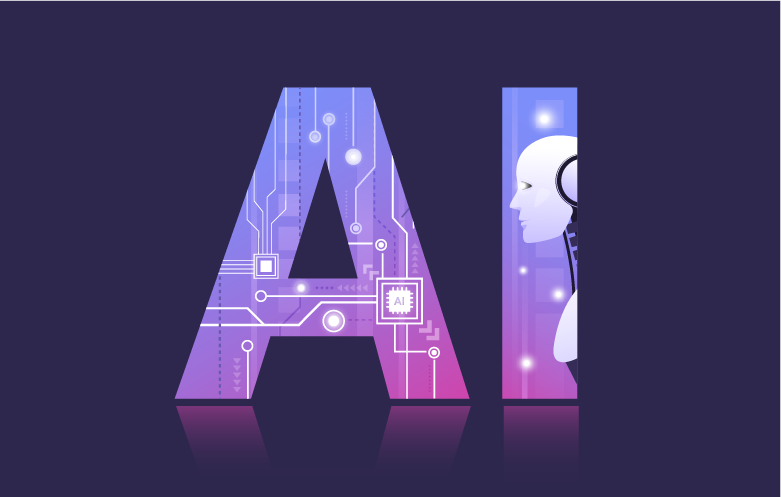

Automating tasks is yesterday’s win, teaching systems to think is today’s game-changer.
Traditional automation has helped businesses automate repetitive tasks, but it falls short when decision-making or complex situations arise. That’s where agentic AI shines; it not only automates workflows but also actively manages them. With the agentic AI framework, organizations can automate tasks, detect anomalies, and automate responses utilizing AI insights.
Unlike old systems, agentic AI responds instantly, makes independent decisions, and automates workflow based on the evolving business environment.
For business leaders, the question isn’t whether to automate but how to automate and streamline business operations.
In this blog, we will explore AI agents streamlining workflow from passive systems to strategic powerhouses for operational flexibility and business growth.
What is agentic workflow in AI?
Agentic workflow in AI is a structured process in which generative AI agents operate autonomously and make independent decisions to achieve specific goals by interacting with surrounding systems.
Legacy AI agents are heavily dependent on predefined rules and human intervention. Agentic AI analyses and understands the system, learns from feedback, makes decisions, and acts independently.
Generative AI agents simplify complex tasks by organizing workflow, assigning tasks to specialized agents, and streamlining communication between humans and AI agents to enhance the output.
Moreover, it can automate repetitive, error-prone, or data-sensitive tasks by understanding the environment and thus acts as an intelligent agent.
Did you know?
Gartner has named Agentic AI as the top trending technology in 2025.
Key benefits of agentic AI in enterprise workflows
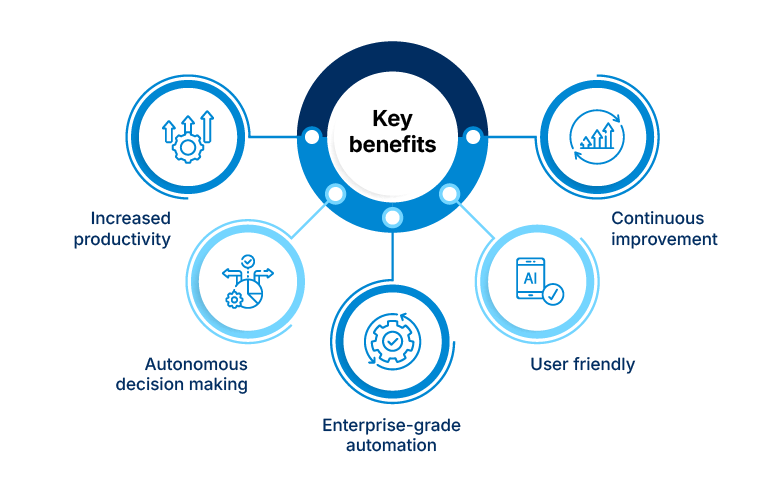
1. Increased productivity
Agentic AI in enterprise workflows breaks down tasks into small parts, helping you to complete work faster. Repetitive and mundane tasks are seamlessly automated so that your team can focus on high-priority tasks.
2. Autonomous decision making
By implementing agentic AI, organizations can enhance their predictive maintenance systems, reducing equipment downtime by 30%.
How it works:
- Decisions are made quickly as GenAI agents adapt to the environment without human intervention.
- Agentic workflow analyses data in real time and responds quickly.
- Agentic AI keeps learning from feedback, leading to better utilization of resources.
3. Enterprise-grade automation
Agentic workflow scales as your business expands. As your business grows and becomes more sophisticated, the agentic workflow adapts to the new environment by leveraging technologies. This enables organizations to streamline workflows by adapting to performance insights and operational demands, ensuring continuous efficiency without additional manual effort.
For instance, whether you have 20 clients or 100 clients, the agentic workflow automatically adjusts to demand and helps you work seamlessly without any hindrance.
4. User friendly
Agentic workflow swiftly interacts with employees and customers. They respond in real-time by learning from feedback, enhancing user experience and bottom line, reducing attrition and retaining long-term customers.
5. Continuous improvement
Machine learning, as the basis of agentic workflows, drives continuous business growth by analyzing performance, identifying inefficiencies, and optimizing processes over time.
How it works:
- Real-time learning: AI agents constantly learn and improve with feedback and task executions as user interaction increases.
- Intelligent adaptation: Using reinforcement learning, AI systems continuously assess data, learn from patterns, and enhance their performance for optimal results.
- Feedback loops: Agentic workflow constantly learns from the feedback received after every task. Using this model, they fine-tune the responses, enhancing future executions.
Core elements driving AI agentic workflows
1. Interpretation
AI agents extract real-world data using sensors, cameras, and input devices. This critical phase in AI agentic workflows helps interpret the environment, recognize key factors, and define the problem that needs resolution.
For instance: A warehouse robot scans barcodes and detects obstacles using cameras and LiDAR to navigate aisles and transport goods efficiently.
2. Acts in real-time
After interpretation, the AI agent executes tasks within its environment, often breaking complex operations into smaller and manageable steps. These actions may include physical movement,
system adjustments, or responding to user queries. The agent continuously assesses its impact and refines future actions based on real-time feedback.
3. Learns from feedback
A key feature of agentic AI workflows is the ability of AI agents to learn from their actions. By analyzing feedback on decision outcomes, they enhance their strategies for continuous improvement. Techniques like reinforcement learning and supervised learning help agents enhance efficiency and adaptability over time.
4. Context-aware decision making
Once the AI agent gathers and processes data, it determines the best course of action based on predefined objectives, learned behaviors, or real-time analysis. Techniques like reinforcement learning enable it to refine decisions through interaction and feedback, while advanced models, such as deep learning and neural networks, enhance complex decision-making.
BY 2028, 33% OF ENTERPRISE SOFTWARE WILL USE AGENTIC AI, AND AT LEAST 15% OF DAY-TO-DAY WORK DECISIONS WILL BE MADE AUTONOMOUSLY. – GARTNER
How does agentic AI work independently to optimize workflow?
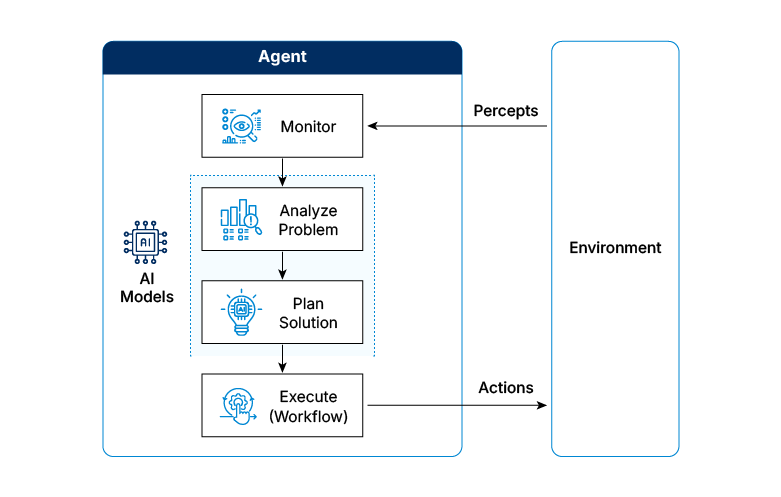
Agentic AI optimizes workflow independently by utilizing AI agents that analyze the context, make decisions and execute tasks to achieve targeted goals. It works autonomously by adapting to the evolving environment. Here is a further breakdown of how agentic AI work independently to optimize workflow.
1. Autonomous work
Agentic AI operates with the help of AI agents that can function independently, making autonomous strategic decisions to complete specific goals. It utilizes machine learning to optimize work by learning and adapting from the available data. This helps the workflow to improve constantly without human intervention. Machine learning algorithms analyze data, make predictions, and ultimately streamline the process.
2. Decision making
Natural language processing helps enterprise AI agents respond precisely to human language. Agentic AI evaluates options, designs strategies, and executes tasks in real-time, rather than relying on predefined prompts or rules. Moreover, it handles complex and conversational tasks like managing customer inquiries or generating detailed reports.
3. Collaborate with multiple agents
Robotic process automation works in tandem with agentic AI to handle repetitive and rule-based tasks. This technology creates a reliable framework for automating complex workflow with minimal human effort. Thus, multiple AI agents working together solve complex problems utilizing different perspectives and capabilities.
Suggested: How agentic AI revolutionizes decision-making for the C-Suite through the JTBD framework
Use case of agentic AI
1. Security
Agentic AI continuously monitors network traffic and evolving patterns by identifying anomalies and triggering automated responses in defense.
2. Code generation
AI agents write, test, and refine codes based on the real-time feedback received during task execution, optimizing the software development cycle.
3. Supply chain management
AI workflow agents predict and adjust inventory levels, and optimize logistics by analyzing supplier behavior, market trends, and real-time disruptions.
4. Human resources
AI-driven recruitment workflows analyze resumes, conduct initial candidate screenings, and refine selection criteria based on hiring requirements.
5. Clinical support
AI assists doctors by analyzing patient records, learning from past diagnoses, and recommending personalized treatment plans.
Looking for an agentic AI workflow framework?
Revolutionize your business with our enterprise AI agents. Our AI experts will help you implement strategic and more efficient solutions for lasting success!
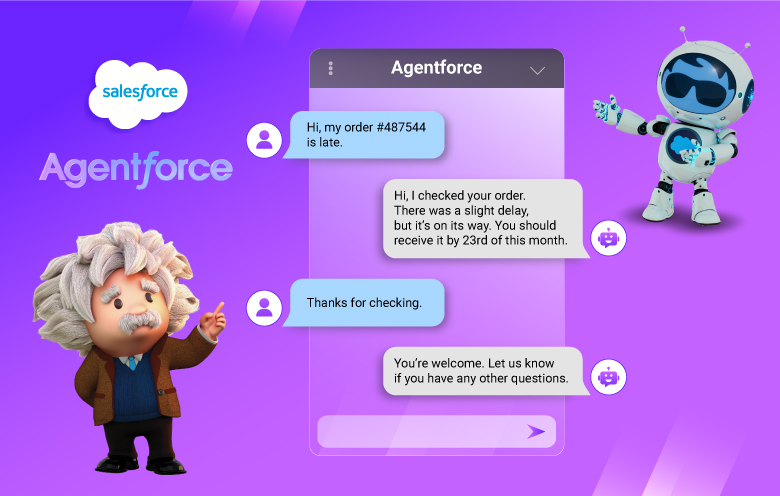
Needle: A GenAI framework for next-gen enterprises
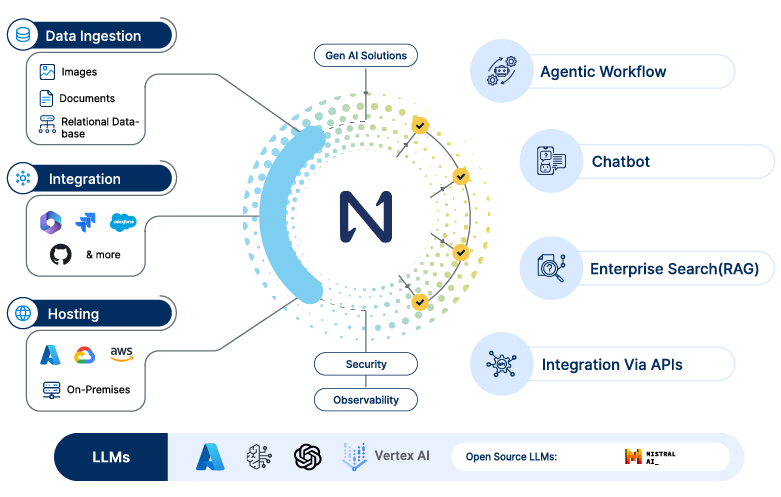
Needle is a cutting-edge generative AI framework developed by Softweb Solutions to enhance decision-making drive innovation and streamline operations. With scalable solutions, seamless integration, and agentic workflow, Needle enables enterprises to boost productivity, automate complex processes, and optimize processes without any hassle.
Needle scales with growing business needs, ensuring robust security with on-premises deployment and gathering actionable information from data to keep you ahead of the curve. It’s more than just a tool; it is a game-changing strategy for businesses looking to thrive in the market.
Needle is the key to innovation; choose which business opportunity you would like to unlock. Talk to our agentic AI consultants and get an exclusive demo today.
Need Help ?
We are here for you